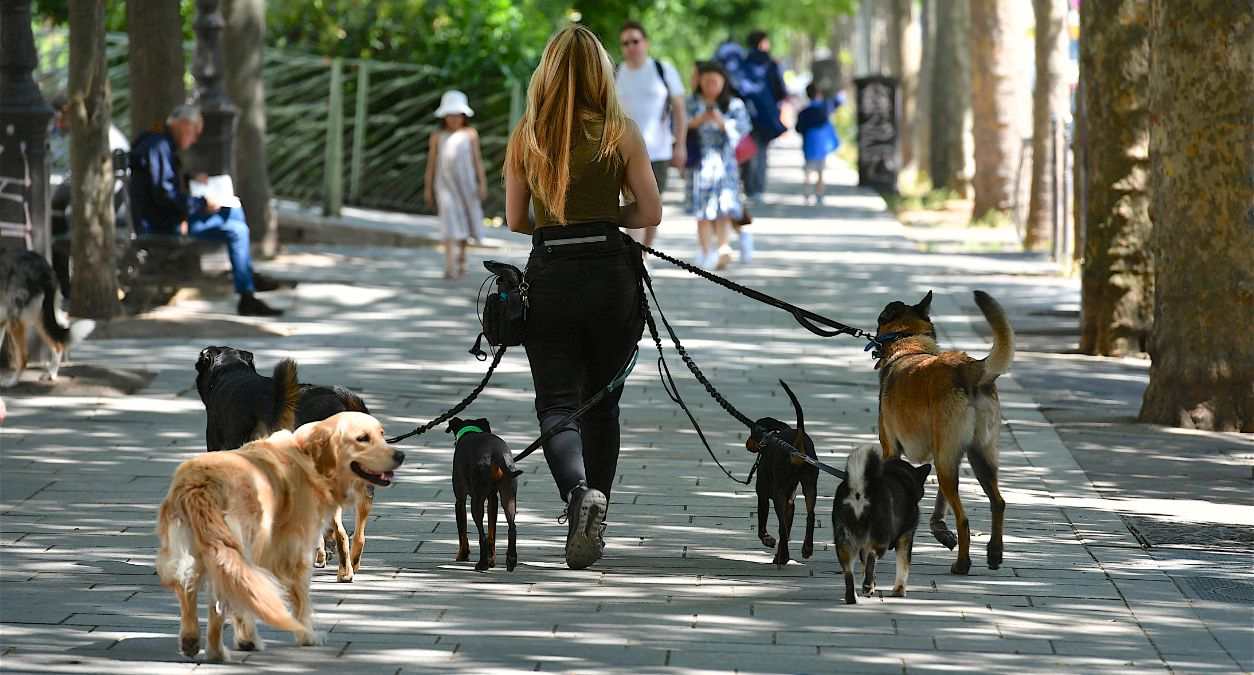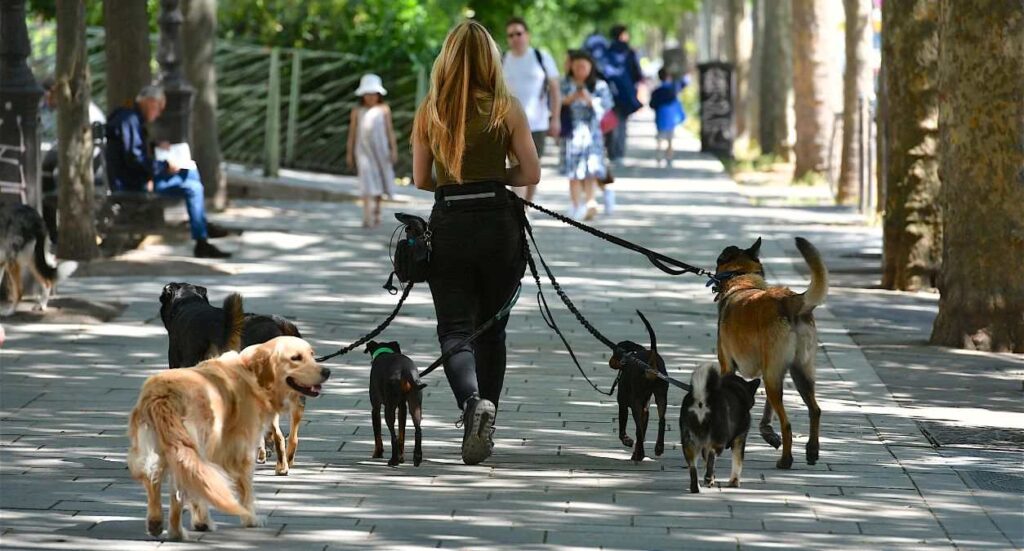Table of contents
Table of contents
Hiring a dog walker has become one of the most common services among pet owners in the UK. With busier schedules, long commutes, and more people returning to the office, the need for professional dog walking continues to grow. As a result, many owners are asking an increasingly popular question: what are dog walking prices in 2026?
Whether you’re a dog owner planning your monthly budget or someone considering launching a pet-care business, understanding typical dog walking rates UK can help you make an informed decision. In this guide, we explore the average price for dog walking, what’s included in the service, how rates vary across the country, and the factors shaping costs now and, in the years, ahead. We’ll also look at why insurance, an often overlooked detail, matters.
Average dog walking prices UK 2026
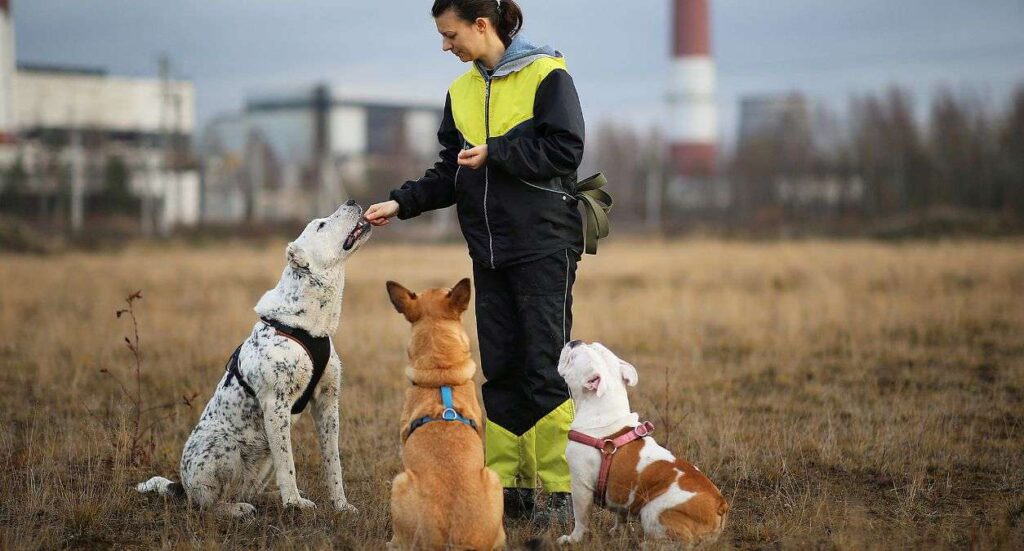
Dog walking prices continue to rise gradually year-on-year. In 2026, the average dog walking rates per hour sit between £16 and £25, although the actual price you pay depends on several factors including location, whether the walk is solo or group-based, and the dog walker’s level of training and experience.
Most owners tend to book one-hour walks, although half-hour and extended sessions are available. Half-hour walks usually range from £10 to £15, while a full hour costs £16 to £25. Group walks, where owners’ dogs are walked together, are generally cheaper, whereas solo walks command a premium because they require dedicated attention and time.
| Type of walk | Average price 2026 |
| 30-minute solo walk | £10–£15 |
| 60-minute solo walk | £16–£25 |
| 30-minute group walk | £8–£12 |
| 60-minute group walk | £12–£18 |
| Additional dog (same household) | +£4–£8 |
This gives a useful baseline when comparing dog walking rates, though location remains one of the biggest determinants of cost.
Regional variation in dog walking rates
Dog walking prices vary significantly from region to region. London and surrounding commuter areas in the Southeast consistently display the highest dog walking prices per hour, mostly due to increased demand and higher living costs. In contrast, dog walkers in Scotland, Wales, and the North of England generally charge at the lower end of the scale.
| Region | Approx. Hourly Price |
| London | £20–£30 |
| South East | £18–£26 |
| South West | £14–£22 |
| Midlands | £14–£20 |
| North West | £12–£18 |
| North East | £12–£18 |
| Wales | £12–£17 |
| Scotland | £12–£18 |
| Northern Ireland | £12–£17 |
Urban areas tend to experience greater demand for services, giving walkers justification to charge more. Competition does exist, but many walkers offering professional qualifications or enhanced services, such as GPS tracking, can still command premium pricing.
Rural regions often come with lower average dog walking rates, although this can be offset by longer travel distances, which may lead to travel charges or minimum booking requirements. The key takeaway is that dog walking prices are not uniform; they reflect local living costs, competition, and accessibility.
What’s included in dog walking service rates?
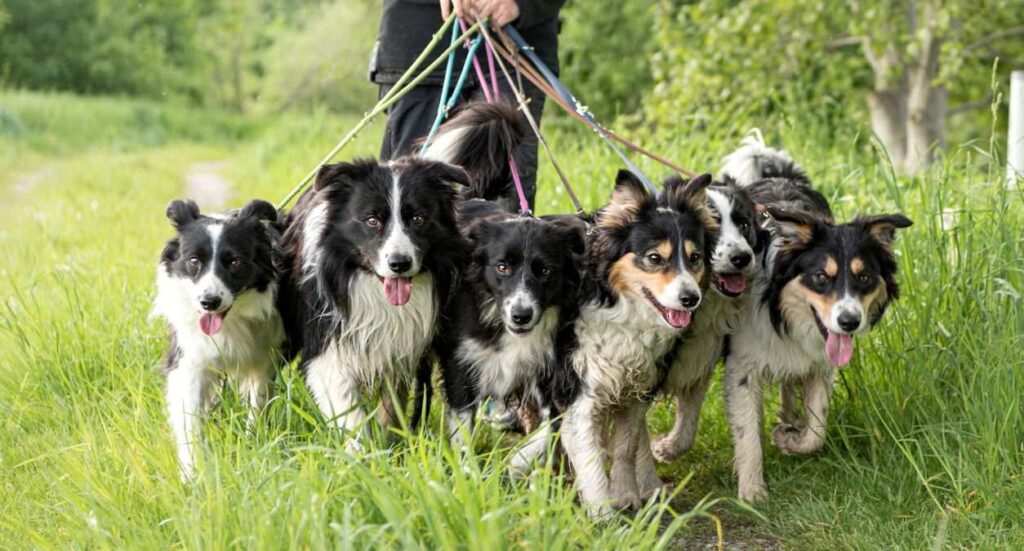
While prices are important, understanding what is actually included helps determine what offers good value. Standard dog walking services usually involve pick-up and drop-off and a full 30 or 60 minute walk. Most walkers will provide fresh water, treat rewards if permitted, and occasionally short training reinforcement such as lead manners or recall support. Some will also send owners walk notes or photos afterwards, an addition that many customers particularly appreciate.
Increasingly, walkers are using technology such as GPS walk-tracking, which allows owners to see where their dog has been. For many, this alone justifies a slightly higher fee, as it reassures them their dog received the attention they paid for.
For owners with puppies, senior dogs, or dogs with medical conditions, walkers might offer tailored home visits or medication administration. Such extras understandably increase the average price for dog walking, especially when they require specialist knowledge.
How experience and qualifications influence your pricing
Dog walkers enter the profession with varying backgrounds. Some are new to the industry, while others bring formal training in areas such as canine behaviour, canine first aid, or have accumulated years of practical experience.
Walkers with recognised certifications or advanced behavioural knowledge naturally position themselves at the higher end of the pricing spectrum. This expertise is particularly valuable when working with reactive dogs, those requiring additional support, or clients who want a more structured and enriched walking experience. These walkers also tend to offer more comprehensive updates, thoughtful enrichment planning, and confident, safe group-walk management.
Across the industry, many insured and well-reviewed professionals commonly charge between £18 and £30 per hour, demonstrating how specialist skills and experience can appropriately influence your rates.
Why dog walking insurance matters

Insurance is an essential part of running a professional dog walking business. Even the most careful walker can encounter unexpected situations. Dog walking insurance typically provides public liability cover, which protects the walker if a dog in their care injures someone or damages property. Policies may also cover loss of keys, veterinary fees, employers liability, and equipment.
From the owner’s perspective, hiring an insured walker provides reassurance. It’s a sign of professionalism and signals that a walker takes their responsibilities seriously. This peace of mind is often reflected in price; insured walkers may charge more but bring reduced risk.
To help understand insurance requirements in more detail, check out our blog : What insurance do I need for a dog walking business. It’s also recommended to have a written contract in place with your clients, this way you have a clear agreement on what is included in a walk, your agreement and schedule and also what happens in the event of an unfortunate incident. You can check out our guide on what you need in a dog walking contract.
Add-ons and extras that affect dog walking prices
While most owners are content with standard walks, additional services can be added on. Among the most common are weekend or bank-holiday requests, longer walks, pet taxi services, and puppy visits.
A walker may also charge extra for reactive or large-breed dogs requiring one-to-one handling. While these costs increase the total price of care, they ensure appropriate time and consideration are given.
Examples of add-on costs:
| Add-On | Approx. Price |
| Additional dog | +£4–£8 |
| Weekend or bank holiday | +£5–£10 |
| Extended walk (90 minutes) | £10–£18 |
| Puppy visits | £10–£20 |
| Pet taxi | £10–£25 |
| Administering medication | £3–£10 |
The optional nature of these extras means that average dog walking rates vary considerably depending on what an owner requires.
Urban vs Rural: why location matters
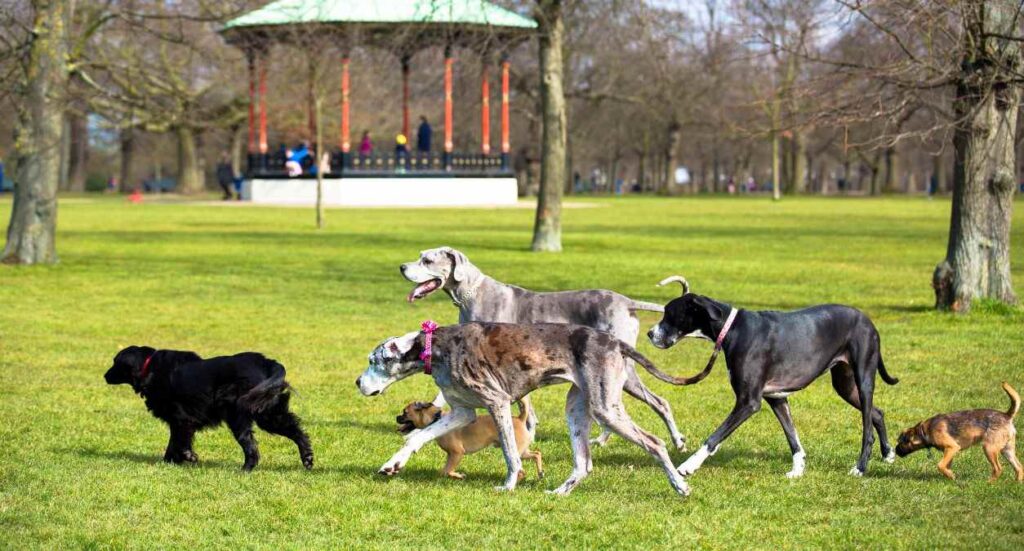
The contrast between urban and rural dog walking reflects not only local demand but also the differing lifestyles of dogs and owners. In cities, dogs may not have access to large open spaces or gardens, increasing both the need for walks and the value placed on enrichment. Public transport and traffic also slow down travel, reducing the number of dogs a walker can realistically schedule per day. All of this places upward pressure on pricing.
In rural areas, dogs often have freer access to outdoor space. Walkers may still be in high demand, but less competition and wider environments mean pricing remains moderate. Longer travel distances across rural terrain can contribute to fuel costs, although many walkers factor this into their existing rate or limit their service area.
Key drivers of dog walking prices
A range of factors influence dog walking rates per hour, and these can fluctuate through the year. Demand is one of the most important. School holidays, bank holidays, and summer months often bring heightened demand as families travel. Prices may temporarily rise during these periods or bookings may need to be scheduled further in advance.
The dog’s temperament also matters. Dogs that are reactive, highly energetic, or require specialised handling often cannot be placed in group walks. Solo services naturally cost more, and some walkers apply an additional fee for dogs that require enhanced management.
Technology is another emerging influence. Apps offering GPS routes, payment processing, and progress notes have become increasingly common and often contribute to higher dog walking prices per hour. Walkers also invest in equipment such as leads, enrichment toys, and personal transport, all of which add to overheads.
Future price trends for 2026 and beyond
Current industry forecasts suggest a steady rise in average dog walking rates over the next year, estimated at around 5–10%. This may be driven by higher insurance costs, fuel prices, and an increase in professional standards. More walkers are completing certifications and offering structured services rather than simply providing exercise.
Technology integration, such as real-time GPS walk logs and subscription platforms, is also likely to influence pricing. Some businesses now offer monthly walk packages, which provide predictable income for walkers and lower per-walk costs for clients. Subscriptions may encourage clients to commit to regular walks, improving consistency for dogs and stability for walkers.
With more attention on wellbeing and enrichment, the role of the dog walker continues to evolve. We may see more walkers extending into specialist services, including senior-dog support, disability care, or behaviour-focused activities. These premium services are most likely to push the upper end of dog walking prices.
Is it worth charging more for a higher-end service?
While price is always a factor for clients, many will recognise that the value of a professional dog walker goes far beyond simply providing a walk. Walkers with training and experience can reinforce positive behaviours, maintain safety around unfamiliar dogs, and monitor each dog’s wellbeing through detailed notes and observations. For dogs that need structure, consistency, or additional reassurance, this added level of professionalism can make a meaningful difference.
More experienced, fully insured walkers are also better prepared to handle unexpected situations—whether it’s encountering a loose dog, managing traffic risks, or responding appropriately to an emergency. In this sense, higher service rates reflect not just the time spent walking, but the expertise and risk management that support a dog’s long-term wellbeing.
Final thoughts on dog walking prices in 2026
As we move through to 2026, dog walking remains a valuable and increasingly professionalised service. Prices vary across the country but generally fall between £16 and £25 per hour, with London and the South East at the upper end and the North, Scotland, Wales, and Northern Ireland slightly lower.
Factors influencing cost include walk length, whether the walk is solo or group-based, the walker’s experience, and optional extras such as puppy visits or GPS tracking. Insurance also affects the average price for dog walking, contributing to peace of mind for both walker and owner.
Ultimately, choosing a dog walker is about more than selecting the cheapest option. The right professional provides enrichment, safety, reliability, and attention to the needs of each dog. As demand continues to rise, the industry will likely see further specialisation and technological integration, both of which may continue to influence dog walking rates per hour in future years.
Get Dog Walking Insurance from Protectivity
*Disclaimer – This blog has been created as general information and should not be taken as advice. Make sure you have the correct level of insurance for your requirements and always review policy documentation. Information is factually accurate at the time of publishing but may have become out of date.
Last updated by




